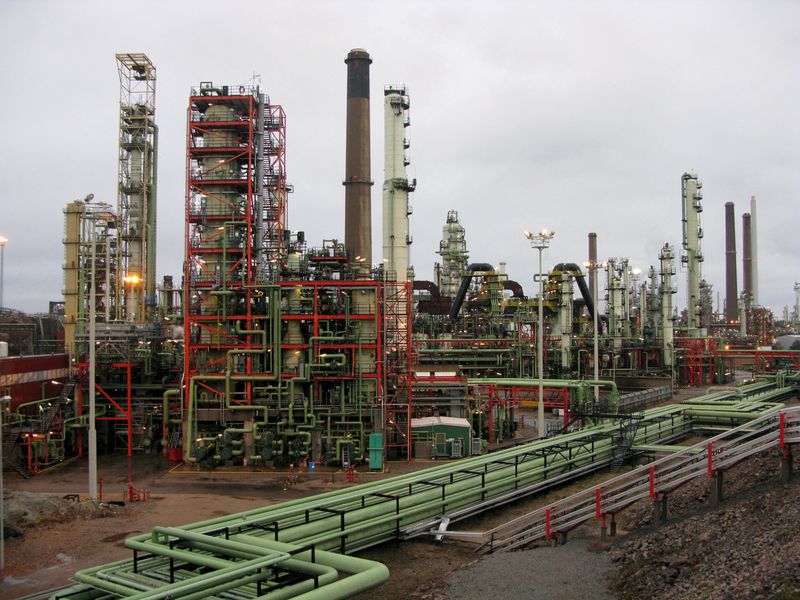Commodities
Oil settles down, posts weekly loss as geopolitical risk premium ebbs


© Reuters. FILE PHOTO: General view of Neste’s oil refinery, with a total refining capacity of about 13.5 million tonnes per year, in Porvoo, southern Finland, November 17, 2015.REUTERS/Jussi Rosendahl/File Photo
By Laura Sanicola
(Reuters) – Oil prices settled more than 2% lower on Friday as supply concerns driven by Middle East tensions eased, while jobs data raised expectations the U.S. Federal Reserve could be done hiking interest rates in the biggest oil consuming economy.
futures were down $1.92, or 2.3%, to $84.89 a barrel. U.S. West Texas Intermediate crude futures fell $1.95, or 2.4%, to $80.51 a barrel.
Both benchmarks settled down more than 6% on the week.
Hezbollah leader Sayyed Hassan Nasrallah, speaking for the first time since the Israel-Hamas war erupted, warned on Friday that a wider conflict in the Middle East was possible but did not commit to opening another front on Israel’s border with Lebanon.
“The market is taking this conflict in its stride, as it looks to be neither a significant demand or supply disruption event,” said John Kilduff, partner at Again Capital LLC in New York.
U.S. job growth slowed more than expected in October, official data showed, while wage inflation cooled, pointing to an easing in labor market conditions.
The data bolstered the view that the Federal Reserve need not raise interest rates further.
The Fed held interest rates steady this week, while the Bank of England kept rates at a 15-year peak, supporting oil prices as some risk appetite returned to markets.
But a private sector survey on Friday showed that while China’s services activity expanded at a slightly faster pace in October, sales grew at the softest rate in 10 months and employment stagnated as business confidence waned.
The data followed a reading from the National Bureau of Statistics on Wednesday that showed China’s manufacturing activity unexpectedly contracted in October.
On the supply side, Saudi Arabia is expected to reconfirm an extension of its voluntary oil output cut of 1 million barrels per day through December, based on analyst expectations.
The U.S. House of Representatives easily passed a bill to bolster sanctions on Iranian oil in a strong bipartisan vote, but it was unclear how effective the legislation would be if signed into law.
While Congress can pass sanctions legislation, such measures often come with national security waivers that allow presidents discretion in applying the law.
China could also continue to import the oil despite new sanctions.
U.S. energy firms this week cut the number of oil and rigs operating to their lowest since February 2022, energy services firm Baker Hughes said on Friday.
Commodities
Oil prices rise; U.S. crude inventories plunge, Russia-Ukraine truce eyed
Commodities
India’s Reliance to stop buying Venezuelan oil over US tariffs, sources say
Commodities
Oil prices climb on Venezuela supply worries

 Forex3 years ago
Forex3 years agoForex Today: the dollar is gaining strength amid gloomy sentiment at the start of the Fed’s week

 Forex3 years ago
Forex3 years agoUnbiased review of Pocket Option broker

 Forex3 years ago
Forex3 years agoDollar to pound sterling exchange rate today: Pound plummeted to its lowest since 1985

 Forex3 years ago
Forex3 years agoHow is the Australian dollar doing today?

 Cryptocurrency3 years ago
Cryptocurrency3 years agoWhat happened in the crypto market – current events today

 World3 years ago
World3 years agoWhy are modern video games an art form?

 Commodities3 years ago
Commodities3 years agoCopper continues to fall in price on expectations of lower demand in China

 Economy3 years ago
Economy3 years agoCrude oil tankers double in price due to EU anti-Russian sanctions























